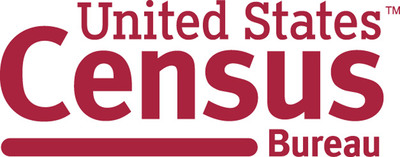WASHINGTON, Sept. 19, 2016 /PRNewswire-HISPANIC PR WIRE/ — The U.S. Census Bureau today released its most detailed look at America’s people, places and economy with new statistics on income, poverty, health insurance and more than 40 other topics from the American Community Survey.

Many states saw an increase in income and a decrease in poverty rates between 2014 and 2015. During that same period, the percentage of people covered by health insurance increased in all of the largest 25 metropolitan areas. The findings are from the U.S. Census Bureau’s 2015 American Community Survey, the nation’s most comprehensive information source on American households. Today’s release provides statistics on more than 40 social, economic and housing topics for U.S. communities with populations of 65,000 or more.
“The American Community Survey allows us to track incremental changes across our nation on how Americans live and work, year-to-year,” Census Bureau Director John H. Thompson said. “It helps people, businesses and governments in all of our states and local communities better understand the needs of their populations, the markets in which they operate and the challenges and opportunities they face.”
Below are some of the local-level income, poverty and health insurance statistics from the American Community Survey that complement the national-level statistics released earlier this week from the Census Bureau’s Current Population Survey. The Current Population Survey is the leading source for national-level data, and the American Community Survey is the leading source for community and local-level data. For more information on the topics included in the American Community Survey, ranging from educational attainment to computer use to commuting, please visit census.gov.
Poverty
- Between 2014 and 2015, poverty rates declined in 23 states. No state saw a poverty rate increase.
- Poverty rates in 2015 ranged from a low of 8.2 percent in New Hampshire to a high of 22.0 percent in Mississippi.
- Some of the highest poverty rates were found in Alabama, Arkansas, Kentucky, Louisiana, Mississippi and New Mexico.
- Some of the lowest poverty rates were found in Alaska, Connecticut, Hawaii, Maryland, Minnesota, New Hampshire, New Jersey and Vermont.
- From 2014 to 2015, the poverty rate decreased in 16 of the 25 most populous metropolitan areas. None of the 25 most populous metropolitan areas saw an increase in the poverty rate.
Income
- Real median household income increased in 39 states and the District of Columbia, with increases ranging from 1.8 percent (Connecticut) to 6.8 percent (Montana). No state saw a decrease in median household income between 2014 and 2015. (“Real” refers to income after adjusting for inflation.)
- Maryland ($75,847) and the District of Columbia ($75,628) had median household incomes that were among the highest for 2015. They were not statistically different from each other. Mississippi ($40,593) had the lowest, which was statistically unchanged from 2014. Median household income increased in 21 of the 25 most populous metropolitan areas between 2014 and 2015. None of the 25 most populous metropolitan areas showed a decrease.
- Median household income was lower than the U.S. median in 26 states and higher than the U.S. median in 18 states and the District of Columbia.
Income Equality
- The Gini index is a standard economic measure of income inequality. A score of 0.0 is perfect equality in income distribution. A score of 1.0 indicates total inequality where one household has all of the income.
- Five states and the District of Columbia had Gini indices higher than the U.S. rate: California, Connecticut, Florida, Louisiana and New York. Twelve were not statistically different from the U.S. rate; the remaining 33 were lower.
- Most states experienced no statistical change in income inequality. Income inequality increased in eight states (Florida, Illinois, Indiana, Kentucky, Michigan, Nebraska, Nevada and New Jersey) and decreased in one (Connecticut).
Health Insurance
- In 2015, the health insurance coverage rate for the population living inside metropolitan areas was 90.7 percent, which is 2.3 percentage points higher than the rate in 2014.
- In 2015, the Boston metropolitan area had the highest health insurance coverage rate (97.0 percent) among the most populous 25 metropolitan areas, and the Houston metropolitan area had the lowest rate (82.7 percent).
- Between 2014 and 2015, the percentage of people covered by health insurance increased in all 25 of the most populous 25 metropolitan areas. The change in the rate of coverage ranged from 0.8 percentage points to 5.2 percentage points.
- Between 2013 and 2015, Miami, Los Angeles and Riverside metropolitan areas experienced the largest increase in the rate of health insurance coverage among the most populous metropolitan areas. Their rates of health insurance coverage increased by about 9.0 percentage points.
This is a truncated version of the release. To access the full version, please visit here.
census.gov
Connect with us on Social media
Public Information Office
301-763-3030 / [email protected]
Logo – http://photos.prnewswire.com/prnh/20110428/DC91889LOGO







